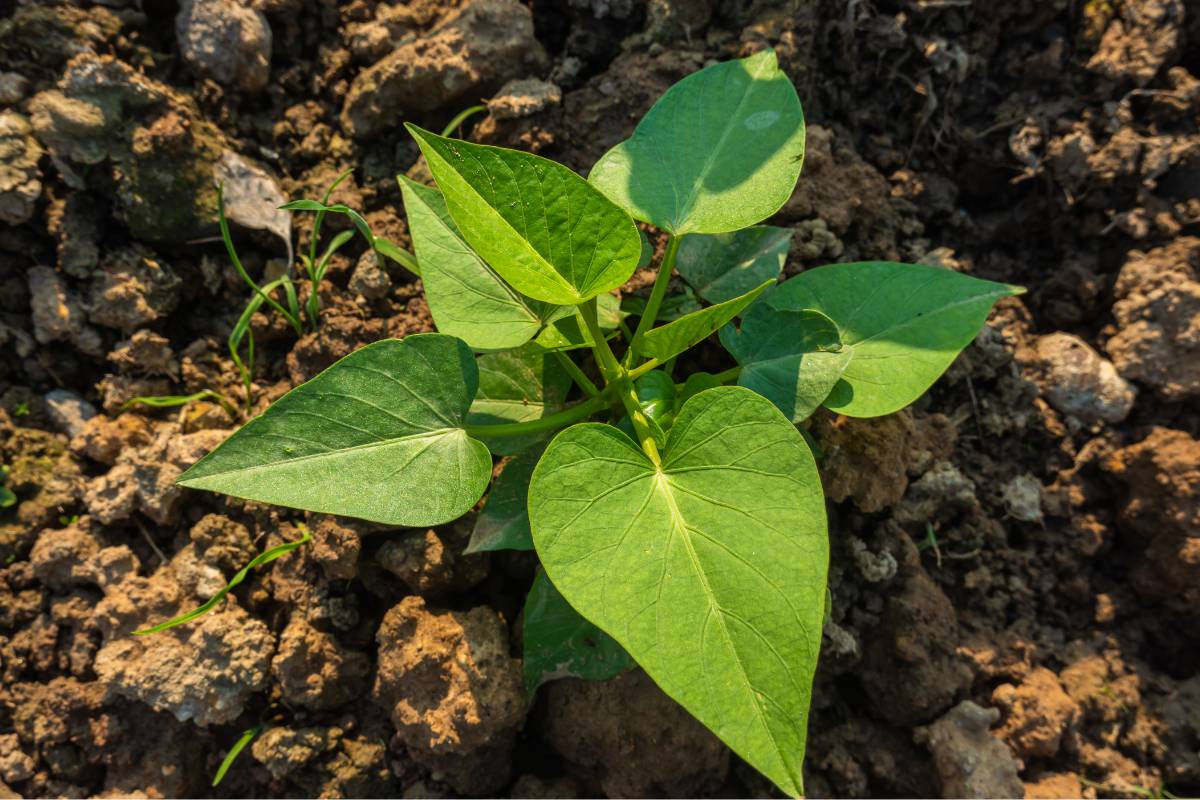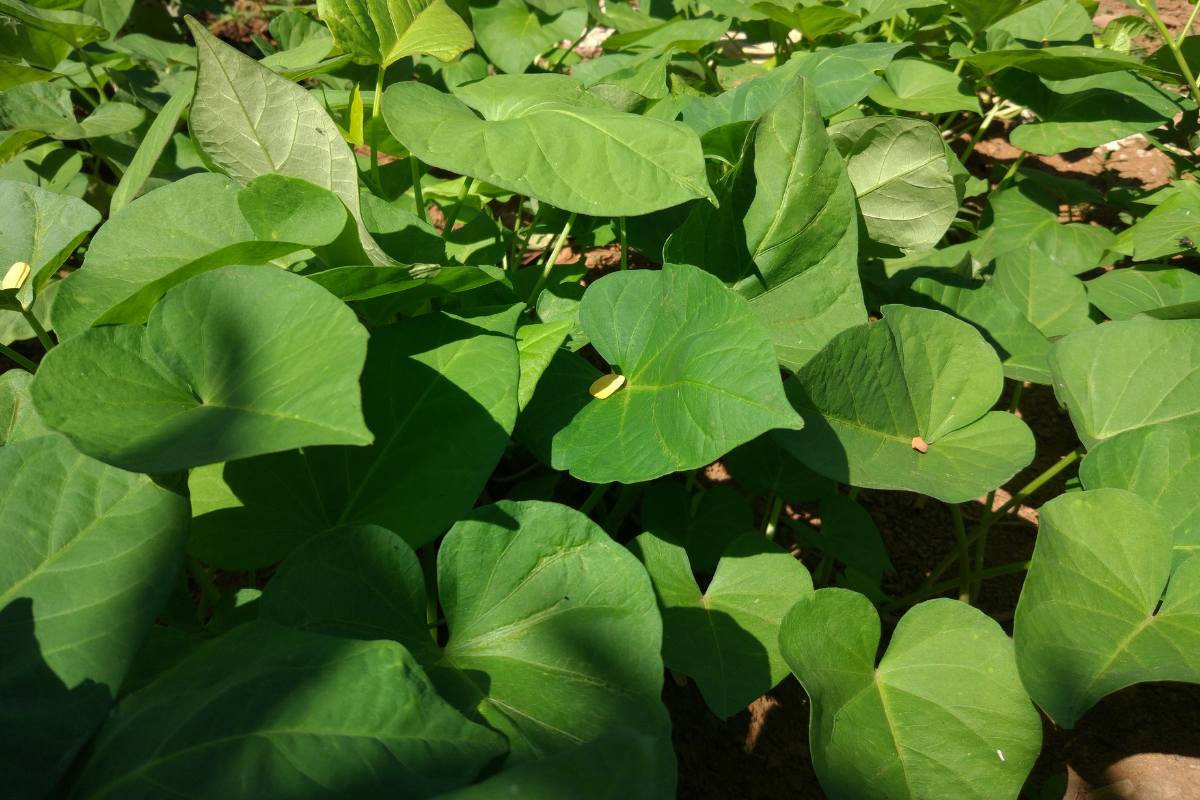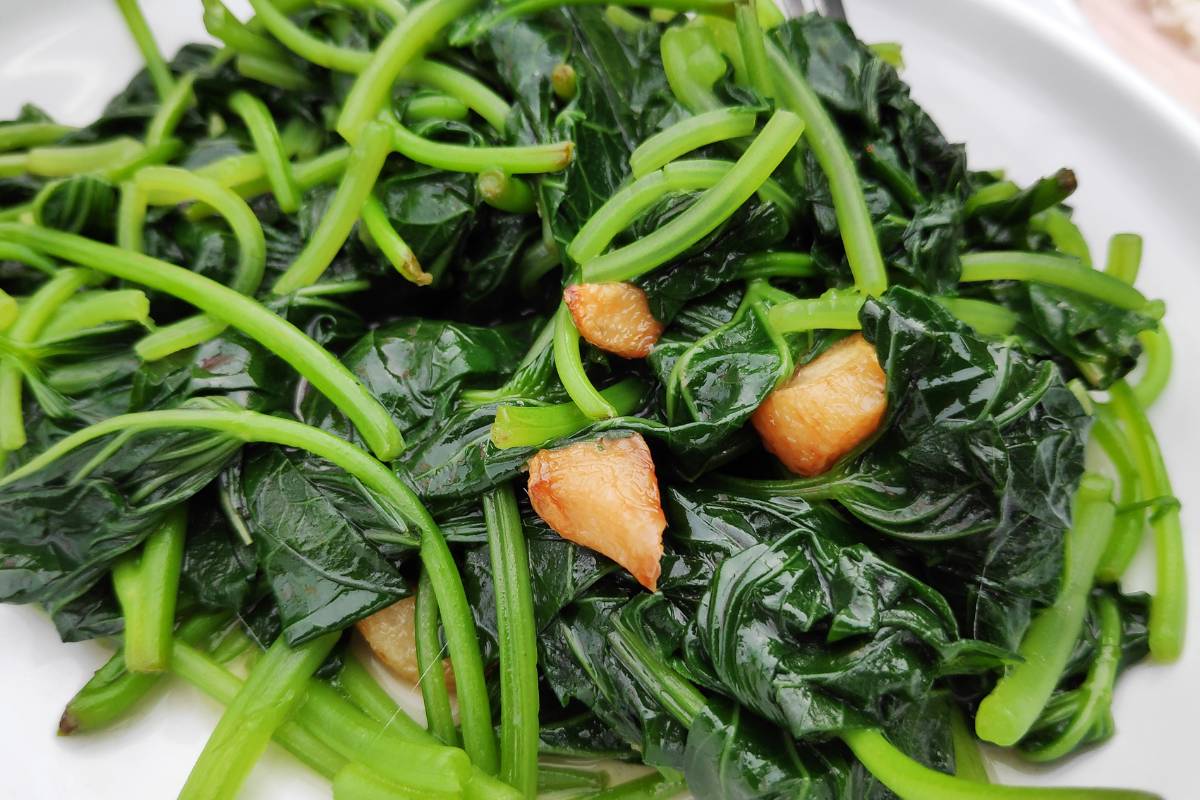Sweet potato (Ipomoea batatas) is usually grown for its delicious, starchy tubers. But sweet potato plants are more versatile than you may expect, and their large heart-shaped leaves are also edible - and delicious.
Sweet potato leaves are part of many Asian cuisines, including Indonesian, Thai and Chinese, where they are known as ‘dì guā miáo’. The nutritious leaves are treated like any other mild-tasting leafy green, and can be steamed, stir-fried, or added to soups and curries. Read on to discover how to grow, harvest, prepare and cook this tasty vegetable.
Nutritional value
Before we explore culinary uses for sweet potato leaves, let's talk about their nutritional value, and why they are worth growing and incorporating into your diet. These lush green leaves boast an array of health benefits, to the point where they have been known as ‘the longevity vegetable’.
Sweet potato leaves are loaded with essential vitamins, especially vitamin B, which supports a healthy metabolism and immune system. They are also a good source of iron and zinc, crucial for maintaining healthy blood and immunity, as well as calcium.
Cultivating Sweet Potato Leaves
The good news for gardeners is that plants cultivated for their tubers will produce delicious shoots and leaves as a bonus with no additional effort. Following the basic grow guide for tuber production will yield several crops of leaves too.
Regular watering will ensure that leaves are tender and juicy. Some attention paid to managing chewing and sap-sucking pests such as aphids and caterpillars will result in more presentable, and palatable, leaves, though as always its best to avoid chemical sprays if possible. Giving plants an occasional boost of a nitrogen-rich liquid fertiliser formulated for leafy greens may help plants produce more leaves, but don’t overdo it if you’re also aiming for a harvest of tubers.
Harvesting Sweet Potato Leaves
Important note: Sweet potato (Ipomoea batatas) leaves are not the same as potato (Solanum tuberosum) leaves, which are toxic and should not be eaten.
Wait until the plant has grown large enough to sustain a harvest while still leaving plenty of leaves to support its ongoing growth. When ready, use clean, sharp snips or secateurs to harvest whole shoots of tender, young leaves, stem and all. It’s best to harvest shoots just before cooking them, but leaves will store for a day or two in a plastic bag in the crisper section of the fridge if necessary.
Preparing Your Harvest
Remove the leaves and their stalks from the main stem, which should be discarded as it’s usually too fibrous to be palatable. Rinse the leaves thoroughly in a colander, allow them to drain and pat the leaves dry in a clean tea towel.
Cooking With Sweet Potato Leaves
Sweet potato leaves can be used in various dishes, just like any other leafy greens. They are closely related to yam leaves, so they can be substituted into any recipe that calls for that ingredient. Their mild taste makes them a versatile ingredient that pairs wonderfully with aromatics like garlic, ginger or chilli.
Steaming or stir-frying sweet potato leaves retains their vibrant green colour and delicate flavour. Steam them for a few minutes until they become tender, then season to your liking. The leaves also work well in coconut-based curries or as the leafy green ingredient in soups and broths.
Recipe: Stir-Fried Sweet Potato Leaves
Ingredients
- 2 tablespoons vegetable oil
- 2 cloves garlic, finely chopped
- 1 teaspoon ginger, finely chopped
- 4 cups sweet potato leaves, rinsed and patted dry
- 1 teaspoon sesame oil
- 1 teaspoon shaoxing wine or water
Method:
- Heat oil in a wok over medium heat.
- Add garlic and ginger; fry until fragrant.
- Add sweet potato leaves, sesame oil, and Shaoxing wine; cook until wilted.
- Serve immediately and enjoy your nutritious stir-fry!
As a home gardener, it’s always satisfying to find new uses for what you grow. With their mild taste and numerous health benefits, sweet potato leaves can be a delicious addition to your range of leafy greens. So, why not plant some sweet potato in your garden and enjoy the bounty of both tubers and leaves?








